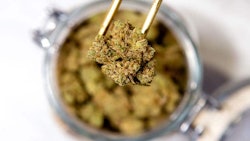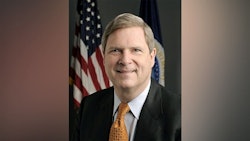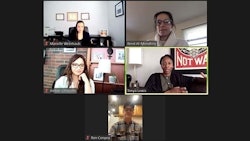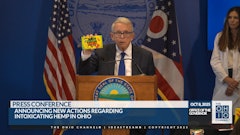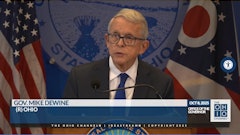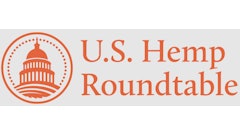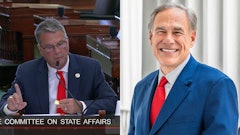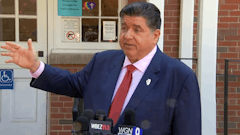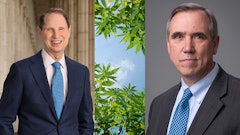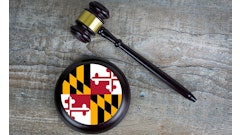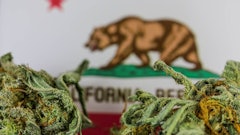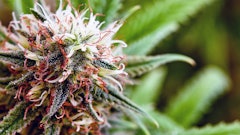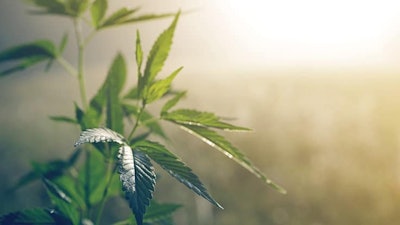
This year was poised to be a turning point for the hemp industry as regulations set forth by the Agricultural Act of 2014 (the 2014 Farm Bill) were due to expire Oct. 31. By then, states were supposed to have updated their hemp plans to be compliant with the Agriculture Improvement Act of 2018 (the 2018 Farm Bill), ushering in a new set of what many in the industry consider to be stricter regulations.
But the novel coronavirus’ arrival to the U.S. in early 2020 made that transition an even heftier challenge. Dozens of states operating under their pilot programs established by the 2014 Farm Bill were suddenly left to not only develop stricter regulations, but also enforce them, all with minimal contact with their colleagues due to social distancing measures.
“We’re no different than any other industry. Whether it was a state department of agriculture couldn’t get commissioners together to approve plan or a legislature in a state couldn’t get together to adopt a plan … the pandemic was preventing some of these things and meetings from happening,” says Larry Farnsworth, the senior vice president of communications and marketing for the National Industrial Hemp Council (NIHC).
Public outcry ensued. Lawmakers and organizations, including the NIHC and the National Association of State Departments (NASDA), sent letters to members of Congress in August asking for an extension of pilot programs through 2021. New York officials even threatened to turn all regulatory duties over to the U.S. Department of Agriculture (USDA) for next season if the extension was not granted.
“It is the Department’s view that many of the requirements concerning the scope and timing of sampling and testing, the disposal of non-compliant plants, and reporting are unrealistic and impose unreasonable burdens on growers and any state interested in administering a compliant program,” wrote Richard Ball, commissioner of agriculture for the New York State Department of Agriculture and Markets, in a letter to hemp growers in August.
But to the relief of many, action followed. Congress passed a continuing resolution (H.R. 8319) in late September to extend hemp pilot programs through September of 2021.
“We’re thankful for both the House and the Senate for listening to us back in August when we wrote about the importance of this program,” NIHC Board Chairman Patrick Atagi said in a news release at the time. “With the Senate’s vote today, hemp farmers across the country will have more certainty tomorrow while states continue their important work to submit final plans to the USDA for approval."
The extension has some slight drawbacks—namely a delay in USDA loan eligibility for states that choose to follow their pilot programs, says Tom Dermody, a senior market analyst at PanXchange. Some farmers in states that have already updated their regulations have also expressed frustration now knowing they could have operated under more lenient regulations for another year.
But on the whole, industry participants agree the extension was a needed relief for states. As of Dec. 9, 24 states are operating under new regulations while 16 have chosen to continue under their pilot programs, including New York. (Six state plans are currently under review, while three have chosen to allow the USDA to handle licensing and enforcement. The USDA has also approved plans for Puerto Rico and the U.S. Virgin Islands, along with 38 tribes throughout the U.S. Idaho is the only state that does not permit hemp production.)
Some also hope the pilot program extension will give the USDA additional time to resolve the top-cited challenges of its interim final rule (IFR), including the requirement to sample hemp within 15 days of harvest, the low permitted 0.3%THC threshold, and the required crop destruction should farmers exceed that threshold.
As of now, the USDA is due to administer its final rule on hemp by Nov. 1, 2021. Farnsworth says the new incoming president and his administration may change that, whether by amending the IFR or rescinding it altogether. He adds that NIHC will be working closely with the USDA to help “steer equal access” to the hemp industry.
“We want everybody who’s farming hemp to have level playing field. I understand some people just want the IFR to kind of be done, but we need to let each state develop their own plan,” Farnsworth says.
For now, states will continue operating under a patchwork of regulations for at least another year—something that has its own set of challenges.
The state of Minnesota has chosen to transition from its pilot program to a new USDA-approved plan by Jan. 1, 2021. But the choice mostly had to do with timing. The federal fiscal year is different than the state’s fiscal year, and Minnesota’s licensing goes by calendar year in its state statute (making licenses valid from Jan. 1 to Dec. 31).
“All those things don’t line up, and that makes it difficult for us,” says Anthony Cortilet, who manages the state’s hemp program. “When we were initially thinking about it, we didn’t want to start a new licensing period with two months left in the season.”
Now, Cortilet is working on getting the state’s hemp regulators and growers up to speed on new regulations, which include moving from a 30-day sampling window to 15 days and collecting more samples than required by the state’s current random sampling protocol.
As a manager of a hemp program that’s been established since 2015, Cortilet is well-acquainted with the constantly changing rules. Still, he’s looking forward to stability, whenever it may come.
“That’s been the life of a hemp regulator, especially for states that have been doing it from the beginning,” Cortilet says. “Things constantly change, and it confuses growers. … Nothing in hemp world has ever been easy to answer. It’s been grey area after grey area under pilot program.”










